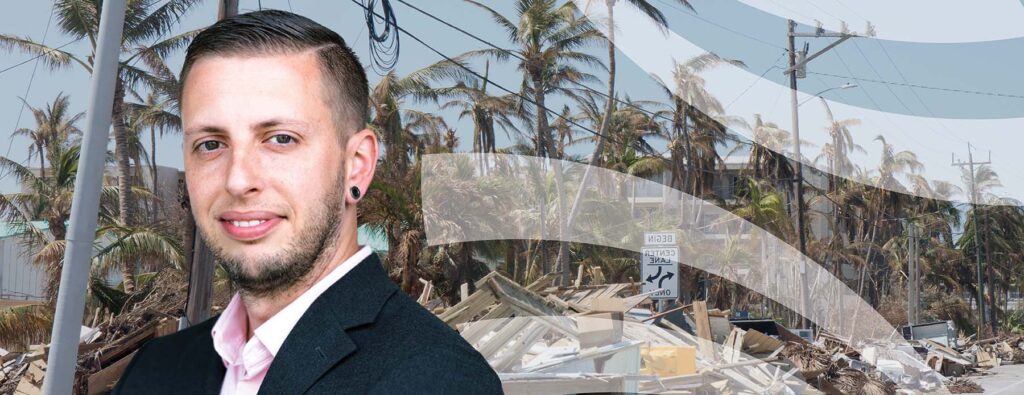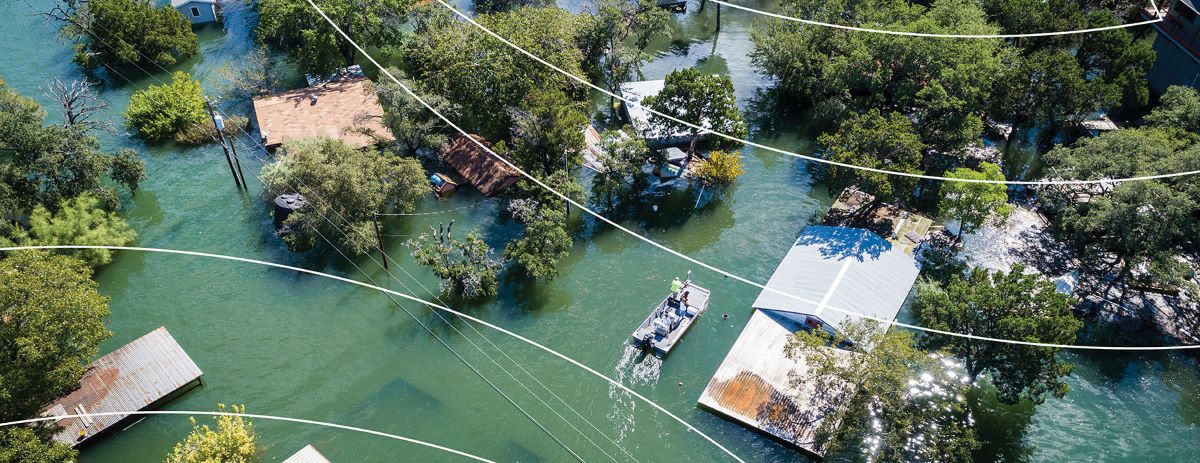On August 30, 2023, Hurricane Idalia, with winds of 125 miles per hour, landed in Taylor County, Florida. Idalia was one of the most rapid intensifications of any hurricane observed in the Atlantic basin, with a 55 mile per hour increase in wind speed in under 24 hours, boosting the storm to a Category 4 hurricane. Idalia experienced an eyewall replacement cycle, which diminished further development and weakened the storm to a Category 3 hurricane just before landfall. Still, the devastation was immense and heartbreaking.
What is an eyewall replacement cycle?
A replacement cycle occurs in major hurricanes, Category 3 and above. It is a process where the outer bands of the storm move inward, robbing the eyewall of moisture and weakening it until it is replaced by the outer bands that become the new eye wall. This process typically weakens the storm slightly but can continue to intensify once the replacement cycle is complete.
Idalia peaked as a Category 4 with sustained winds of 130 miles per hour before the eyewall replacement cycle, weakening the storm slightly but not enough to minimize damages. Idalia was still close to a Category 4 storm when it landed and struck the Big Bend region along the Gulf Coast of Florida.
What type of damage typically occurs from a major hurricane?
Damages related to hurricanes this strong can vary depending on where they make landfall. Factors to consider are:
- Whether the impacted areas are urban, rural and/or vulnerable communities
- What the elevation levels are
- What local bodies of water could cause surge or inland flooding
The locations where Idalia made the biggest impact were primarily rural, which means that not as many homes or structures were affected, but significant wind-blown damage to the landscape was seen. This region is packed with pine trees that have deep, hardened roots. It is rare to see a pine tree uprooted and laid over, however, pine trees snap when the winds are strong enough, which is an incredibly scary situation for people nearby.
Damages and subsequent community hazards that resulted from Idalia included fallen trees, broken and suspended branches and tree limbs, and flooding areas in low elevations. Additionally, roof damage, fencing, and exterior home and building facades were blown off or otherwise damaged.
Why is it critical to address debris and hazards removal immediately following a disaster such as Idalia?
It’s crucial to promptly address debris and hazard removal following a disaster like Idalia to avoid further injury and allow critical emergency services to access properties to help those in need. In Idalia’s case, the vegetative hazards that resulted from its aftermath immediately and eminently threatened communities due to trees and limbs that had already fallen or were about to fall into public and private roads and properties, potentially causing further destruction and harm. As a result of threats such as these, local governments are responsible for removing hazards that threaten or originate from public property to minimize further impacts.
How does a local government qualify for federal assistance and cost reimbursement?
When damages due to an emergency event such as Hurricane Idalia exceed certain thresholds, the Federal Emergency Management Agency (FEMA) will declare these areas eligible for federal assistance in various forms and categories of work. When these thresholds are met and debris is present, FEMA may declare these areas eligible for Category A Debris Removal assistance, providing a federal cost-share of at least 75% of the actual costs. This means that the local government has the onus of performing or contracting the performance of this work, paying for it upfront, and documenting the actions and implementation to receive a reimbursement of 75% of the actual removal costs.
Local governments determine their best path forward, either by performing the debris removal operation with their own resources, including a force account and in-house staff, or if the debris operation exceeds their in-house capabilities, they will contract the work out to a consultant who is experienced in managing the FEMA federal reimbursement process. Should the work need to be contracted, the consultant’s fees are also eligible for reimbursement if FEMA has provided the jurisdiction with a Category A declaration. Not only can local governments contract debris removal activities, but they can also contract for debris monitoring, which will provide the required documentation for the operation to ensure full and proper reimbursement from FEMA.
What can homeowners and business owners do to clear away any storm-related debris from their property?
In many of the towns, cities, and counties that were impacted by Idalia, debris removal operations have commenced and property owners in these communities can clear their property of storm-damaged debris and place it in the public right-of-way adjacent to their property for collection by debris removal companies. It’s important to note that this is not an opportunity for spring cleaning and only storm-damaged debris is allowed to be collected.
Residents can expect a long recovery in many of the impacted jurisdictions. Debris removal can take time, and multiple passes at debris removal and collection will be required.
Are cleanup jobs available to residents in impacted communities?
Most companies who are contracted to perform the debris monitoring and removal operations in impacted communities will hire local staff to support the mission. The practice of hiring local staff not only provides a paycheck to people who may be displaced and/or temporarily out of work due to the storm impacts, it also reduces the cost of the cleanup operation for the local jurisdiction. Minimal experience is required, on-the-job training is provided, it is a good way to earn an income while recovering.
It can be a scary time for residents who are impacted by Hurricane Idalia. There is a lot of uncertainty, and daily lives are interrupted. Recovery will take time, but there are many programs in place to assist residents in their recovery and there is light at the end of the tunnel. Recovery can often lead to a stronger position, allowing residents to weather future storms with more confidence.
For more information on disaster assistance programs in Florida, visit FloridaDisaster.org.



